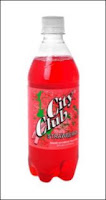The Trademark Trial and Appeal Board has scheduled 12 (twelve) oral hearings for the month of May 2017. The hearings will be held in the East Wing of the Madison Building, in Alexandria, Virginia. Briefs and other papers for these cases may be found at
TTABVUE via the links provided.
 May 2, 2017 - 11 AM: In re Volcano Produce, Inc.
May 2, 2017 - 11 AM: In re Volcano Produce, Inc., Serial No. 86321169 [Section 2(e)(1) mere descriptiveness refusal of
GOLDENBERRY for "fresh fruits"].
May 2, 2017 -2 PM: In re Red Lobster Hospitality, LLC, Serial Nos. 85179591 and 85179618 [refusal to register the mark shown below, in color and in black-and-white, for "restaurant services and restaurant carry-out services," without a disclaimer of LOBSTER].
May 4, 2017 -2 PM: Advanced California Innovative Institute, Inc. v. American Cambridge Institute, Cancellation No. 92060449
et al. [Petition for cancellation of a registration for the mark
ACI INSTITUTE (in standard character and Chinese graphical character form, below) for
"printed instructional, educational, and teaching materials in the field of English, math, and standardized test preparation" and for "educational services, namely, conducting 2nd grade through 12th grade courses of instruction and tutorial services in the field of English, math, standardized test preparation, and college application assistance and distribution of educational materials in connection therewith," on the ground of likelihood of confusion with the registered marks shown below for "education services, namely, mentoring in the field of Math and English; Education services, namely, providing kindergarten through 12th grade (K-12) classroom instruction; Education services, namely, providing mentoring, tutoring, classes, seminars and workshops in the field of attaining higher education," and on the grounds of fraud and lack of ownership].
May 9, 2017 - 10:30 AM: In re Intercontinental Exchange Holdings, Inc., Serial Nos. 86659045, 86659053, and 86659057 [Refusal to register
BRENT for various financial services, on the ground of genericness, or alternatively, mere descriptiveness and lack of acquired distinctiveness].
May 9, 2017 -2 PM: In re Nunn Milling Company, Inc., Serial No. 86596764 [Refusal to register
VERY BERRY for "bird food made in significant part of suet" without a disclaimer of BERRY].
May 10, 2017 - 2 PM: In re Pan American Properties, Corp., Serial No. 86350072 [Section 2(d) refusal of
G SHOT for "Alcoholic beverages except beers; Prepared alcoholic cocktail" in view of the registered mark
G-SHOT for "non-alcoholic energy drinks containing red ginseng"].
May 11, 2017 - 10 AM: In re Invention Development Management Company, LLC , Serial No. 85876688 [Refusal to register
COFFEE FLOUR on the Supplemental Register, for "Flour made by processing and blending together coffee cherry skins, pulp, and pectin for use, alone or in combination with other plant and milk based products, as a dry ingredient in food and beverage products for consumer use," on the ground of genericness].
May 16, 2017 -11 AM: In re Business Building Solutions, LLC., Serial No. 86306250 [Refusal of
THE BREAKFAST SHOPPE for "catering services"on the ground of genericness, or alternatively, mere descriptiveness and lack of acquired distinctiveness].
May 18, 2017 - 11 AM: In re Wal-Mart Stores Inc., Serial No. 86651975 [Section 2(d) refusal of
GEORGE for "watches, clocks, jewellery and imitation jewellery" in view of the identical mark registered for "pet collar medallions and charms"].
May 18, 2017 - 1 PM: In re Williams-Sonoma, Inc., Serial No. 86092589 [Section 2(d) refusal of
MANHATTAN for "upholstered furniture"in view of the registered mark
MANHATTAN CABINETRY for “custom designed and crafted furniture].
May 23, 2017 - 2 PM: In re Sweetwater Brewing Company LLC, Serial No. 86587130 [Section 2(d) refusal of
WHIPLASH WHITE IPA for "ale; beer" in view of the registered mark
WHIPLASH for “wine," and further refused for failing to disclaim the term WHITE IPA].
May 23, 2017 - 2 PM: In re Kipling Apparel Corp., Serial No. 86356569 and 86356608 [Section 2(e)(4) surname refusal of
KIPLING for "picture frames" and "mugs, tumblers, drinking bottles; trays for domestic purposes; coasters not of paper and other than table linen; leather coasters, plastic coasters"].
Read comments and post your comment here.
TTABlog note: Any predictions? See any WYHA?s? See anything interesting?
Text Copyright John L. Welch 2017.

















































